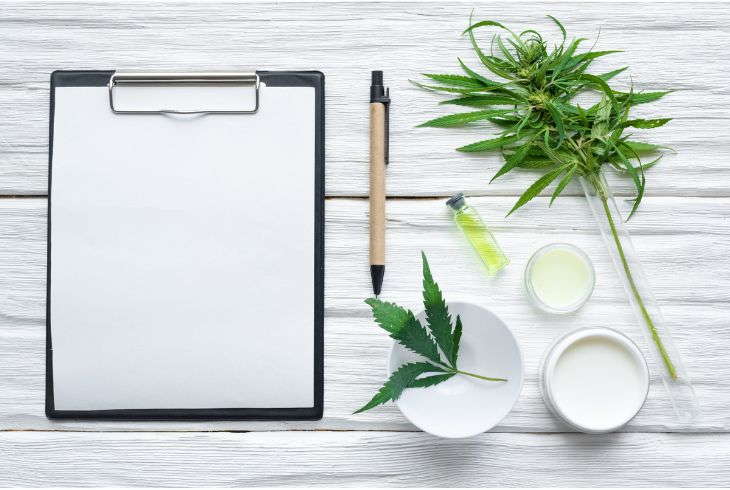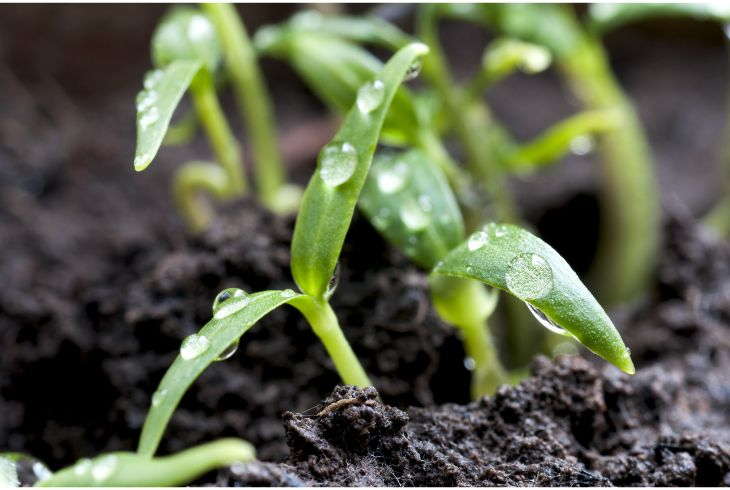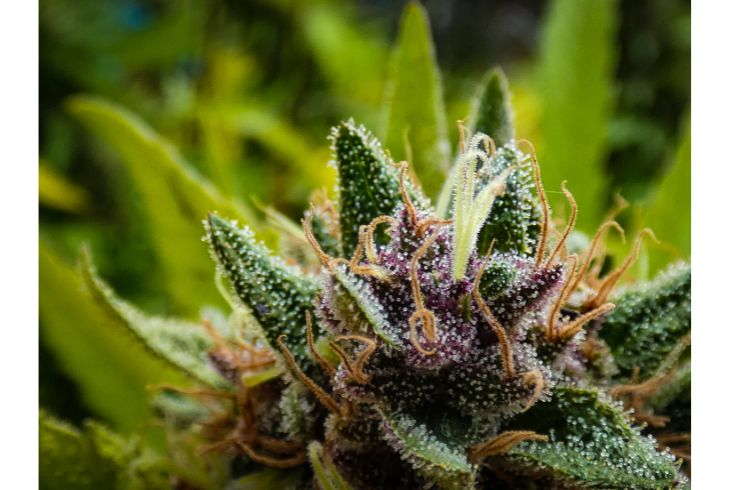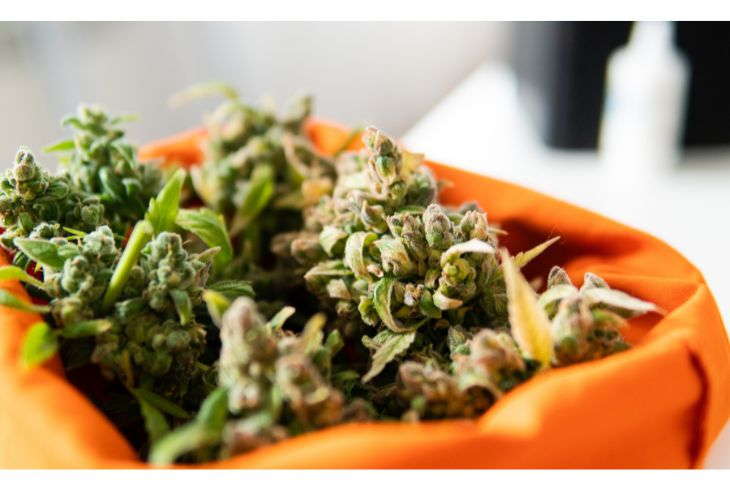A lot of beginner-level growers ask, how to tell if my autoflower is ready for harvest? Are there signs I need to look for? How can I ensure that I don’t harvest earlier than I should?
As a fellow enthusiast in growing marijuana, I dug deeper and looked into the comprehensive harvest process of marijuana.
In this guide, I will give you all signs you need to know to signify that your autoflower plants are ready for harvest.
What Does Autoflower Mean?
Contents

Before I got into the hobby, I was absolutely worse than you are — I didn’t even know this term existed! So, for the benefit of everyone, including people like me who have 0 background in botany, let me briefly go over what autoflower or autoflowering means.
In the simplest, most basic, and easiest way possible, autoflowering is the process in which plants switch from the stage in which they vegetate to the flowering phase.
Autoflowering cannabis plants are those that go through the flowering stage after going through full-grown vegetation on their own.
What’s special about cannabis plants and/or marijuana plants is the fact that they autoflower even if they do not receive that much sunlight.
How Long Do Autoflowering Cannabis Plants Take to Harvest?

Like any other plant, your cannabis plant will have an average life cycle, and this cycle can take anywhere from eight (8) to eleven (11) weeks.
This timeframe is the complete development from a seedling to the plant for harvest. And although that’s the typical life cycle of your autoflowering strains, not all of them will follow that particular schedule.
All strains (autoflower strains and other strains) develop differently, even if you used a similar strain for your planting.
For instance, if you purchased a 10-seed to harvest pack, even if you plant them at the same time, their behavior and growth patterns will differ slightly.
Should I Believe the Breeder’s Schedule?
This is the schedule or the date written on the packaging when you purchase autoflower seeds. Please note that following this can lead you to harvest early or late because this date is just an approximate date for harvest.
You will be able to see a data sheet or a schedule sheet before the purchase for it to serve as some guide, but you don’t need to follow it completely.
In fact, the best time to know that your autoflower strain is ready for harvest would be by their living conditions and other factors that influence the cycle.
Cannabis Seeds to Flower Life Cycle
Before you learn harvest signs and other information about harvesting, do you know the life cycle of your cannabis seeds? Knowing the life cycle will allow you to have a better grasp of what the situation is.
In other words, it’ll be easy for you to understand the growing patterns and the terms I will be discussing below.
Germination Stage (1 to 2 weeks)

This is when the germ in the cannabis seed breaks out of its shell to form roots, and we all know that the main part of marijuana plants and all other plants are the roots.
NOTE: Germination can take place anytime within 1 to 7 days. If you're not seeing signs as early as 2 days, don't worry and think that you've done something wrong.
Seedling Phase (2 to 4 weeks)

The seedling phase is when the roots start to grow up, giving you the smallest hint of green you’ll see from your marijuana plants.
How long would it take for it to go through the germination to the seedling stage? Give it about 1 to 2 weeks. But how long would it get past the seedling stage? — It depends.
The length of this stage actually depends on many factors, but the most influential would be environmental conditions.
The better and more thorough you care for it, the healthier it will be and the faster it will grow.
Growth and/or Vegetation Stage (1 to 8 weeks)

This is the part most growers don’t understand. Just because the plant is starting to vegetate doesn’t mean it is ready for harvest.
What you need to do in this stage is to monitor the slow and steady growth of your plant because 9 times out of 10, it will outgrow the current pot it’s on.
NOTE: There will be some instances where the plant starts growing two (2) inches (about 5cm) per day. There's not one exact measurement, but this pace is fast.
Flowering Stage (4 to 11 weeks)

Now, now, calm yourselves. The flowering phase is the part many growers look forward to because it is the stage in the lifecycle nearing harvest time. You could see early buds, and if you do, please test them out, especially if they’ve been damaged or if they have been compromised.
The flowering time will again depend on the environmental factors, as well as the maintenance you’re putting.
This is also the stage in the cycle where growing marijuana experts are able to determine whether the plant is a male or a female.
NOTE: Male plants produce pollen, while female plants produce flowers or buds.
Autoflowering cannabis plants can be ready for harvest (from seed) in as fast as one (1) month. On the contrary, the particular strain of Indicas could need about six (6) to eight (8) weeks.
Flushing the Plant
Experienced growers would know that the very first step in harvesting autoflowers and other strains is flushing.
Flushing is the process of watering your plants, “flushing” them using water without added nutrients and/or residual non-organic fertilizers. Yes, it is that simple!
I typically use clear distilled and purified water at least once per day, and it was able to flush properly. Depending on the size of the plant would be the amount of water you need to use to flush it successfully.
Here’s a simple guide to help you determine watering before the harvest.
- Germination Stage — 4 to 7 Days
- Seedling Stage — 3 to 7 Days
- Vegetative Stage — 2 to 4 Days
- Flowering Stage — 2 to 3 Days
- Flushing
- Soil — 7 to 10 Days
- Hydroponics — 5 to 7 Days
- Rockwool and Coco — 7 Days
For the most part, you need to start flushing about two (2) weeks before the date of the harvest. Different growers have different opinions on when to start flushing, but for me, I would go for about two (2) weeks to one (1) week.
Understanding the Vegetative Stage of Your Cannabis Plants
Your cannabis plants won’t just go from seed to harvest. As a matter of fact, it would have reached maturity ONLY when it grew past the vegetative phase.
Many growers and enthusiasts know that the vegetative phase of your autoflowering cannabis plant will take anywhere between week one (1) to week five (5).
Also known as the growing stage, this will be when you see your marijuana plants start growing (but not in the form you want them to be YET).
This is the part of their life cycle when your lovely marijuana plant will start developing the formation. It is when you’ll see that it will start the new growth of leaves around its structure.
NOTE: The leaves are important in your marijuana plant because it is the part that would support the stems — and the stems are the carriage of the buds.
So, it’s safe to assume that without the leaves, you wouldn’t have the buds.
I would also like to reiterate that the vegetative period of autoflower plants (as well as those who don’t autoflower) is the most important because this phase handles the formation and cultivation of the leaves, which would be the bud sites.
How To Tell If My Autoflower is Ready For Harvest?

Most growers have formulated their own ways of determining the perfect harvest time based on their experience. But what if you’re trying to learn the ropes and you’re starting out? How can you tell if your plant is ready for harvest?
Checking the Timing and/or Timeframe
The simplest and easiest way to determine whether your autoflower plants are ready for harvest would be by checking the timing of their growth.
Typically, the time for the seed to harvest would take anywhere from 8 to 11 weeks — some can reach 12 weeks for the best and most potent results.
NOTE: Not all marijuana plants are made equally. Some can mature faster than usual, while there are those that really stretch the entire timeframe.
An 8-to-11-week timeframe is just an approximate number, but that should not be the primary indicator of whether your plants are fully mature.
Water Usage and Consumption
Another common sign that your cannabis plant starts to mature is when it’s consuming less water than before. As it matures, it’ll start to reject water coming into its roots.
When this happens, it’s an indication that it’s already stagnant in growth and that it needs to be chopped.
NOTE: When you water it like how you used to, and it stays wet for one (1) to two (2) days, it's ready for harvest.
Stigmas and Pistils
Pistils are the parts of a flower that produces an ovule. It’s like the ovary of the plant or the flower. For autoflowering plants, the pistils are the small white hairs you see on the top of your plant’s flowers.
The purpose of these stigmas is to effectively and efficiently catch pollen. Without stigmas and pistils, the pollen wouldn’t be caught, causing the flowers to wilt and turn brown.
So, if you see white hairs and you notice that there are flowers that are starting to turn brown, it means that it’s almost harvest time.
NOTE: This method is not always 100% accurate. There'll be instances where even when you see that more than half of your flower is brown, you'll still need a few days to about one (1) to two (2) weeks for it to mature.
Checking Trichomes
In scientific terms, trichomes are the epidermal hairs of a plant, and they’re multicellular. For more casual terminology, these are the small protruding hairs on the stems and leaves.
They’re usually so small — almost microscopic that you’ll need to use a magnifying glass to be able to see them properly and clearer.
Out of all these signs, the trichomes are the factors considered to be the standard in finding the right harvest time or that your autoflower is ready.
The color of the trichomes should become ripe, and they will start deteriorating.
Usually, when you see that the trichomes are clear, it’s still premature. You still have to wait for a few weeks. When you see cloudy trichomes, it means that it’s at the peak of potency. Lastly, amber trichomes mean that the THC levels are decreasing and deteriorating, giving some Indica effect.
Assessing Leaf Colors
And last, but most definitely not least, would be by checking out the fan leaves of your plant.
Proper flushing will cause yellow leaves because it’s an indication that your plant isn’t absorbing nutrients any longer. Moreover, this means that your plant is preparing itself for harvest, focusing all its energy on the buds or flower.
Usually, when the leaves turn yellow, it’s a sign that the plant is experiencing deficiencies. However, in the final stage of development, don’t worry — it just means that it’s not getting more nutrients and is almost ready for harvest day.
NOTE: When you start flushing, you'll notice that after 2 to 3 days, the fan leaves will start dying and deteriorating.
By knowing and understanding all these things, you can draft up and use a data sheet so you can track the progress of your plants. This data sheet will be an important component in growing your cannabis plants.
In this sheet, make sure you detail the following:
- Date and time of planting
- Color progression of the fan leaves
- Size of your growing cannabis
- Pistils and stigmas
- Trichome colors
When growing cannabis, a lot of growers and enthusiasts try harvesting at the perfect time. And although that takes a lot of practice and experience, knowing these things can greatly help in your journey in knowing when the perfect harvest time is.
Is There a Best “Season” to Harvest Your Cannabis?

The majority of marijuana growers reside in either a tropical or subtropical country. So, there’s really no “better” season to do the harvest.
But, if you are in a country facing four (4) different seasons, experts say that the best timing or the best season to do the harvest would be during the fall.
So, if you are growing marijuana outdoors and if you are neither in a tropical nor subtropical climate, the best time for growers in the Northern Hemisphere would be September, October, and November, while those in the Southern Hemisphere would be in March, April, and May.
Indoor growers, you can see to it that you’ll be able to harvest at least four (4) to eight (8) months annually.
FAQs
Enrich your mind and improve your craft! Here are a few of the most frequently asked questions about autoflower plants!
What Happens If You Harvest an Autoflower Too Early?
Harvesting earlier than the recommended timeframe will lose the overall potency of the plant, resulting in a less satisfying and pleasurable experience. What this does is will get you clipped quality of your harvest.
What Happens If You Late Harvest Autoflowers?
Harvesting your autoflower strain late is also bad because the THC levels will decrease, but the CBD levels will be higher and will increase. The smoking experience you’ll get would be that marijuana will become more of a sedative than a pleasurable experience.
Do Autoflower Plants Need Dark Before Harvest?
Yes, photoperiod plants need to be exposed to darkness before harvest. Although many people follow the 12-hour/12-hour dark and light cycle pattern, experts and veteran growers set an 18-hour/6-hour light and dark cycle for the vegetative phase, moving onto 12-hour/12-hour for the flowering time and phase.
How to Cut Fan Leaves During Flowering?
The process of cutting the fan leaves during the flowering stage will be the same when you’re cutting leaves during the vegetation stage. In case you’re not familiar with this process, here’s how to do it:
Prune large leaves that are covering the bud sites.
Then, remove dead or drying fan leaves.
Do it slowly and in an alternating pattern.
For the pruning, use a pair of pruning scissors for it.
NOTE: For pruning, make sure that you do it in a week-to-week interval. Pruning regularly can do damage to the plant.
How Do I Know If the Plant Needs Water?
The fastest, easiest, and best way to determine if your cannabis plant needs water is by sticking your finger into the soil, about 1 to 2 inches deep. If you feel it wet, it doesn’t need to be watered, but if it’s dry, you need to water it.
If it feels a bit damp, hold it off for 12 hours to 1 day.
Do Bigger Pots Mean Bigger Buds?
No, not necessarily. However, the best and most recommended size for the pots to pursue the planting would be about two (2) to four (4) inches larger in diameter from the pot that it was planted in.
Final Words
So, if you were asking how to tell if my autoflower is ready for harvest, there’s actually not a specific time frame for it. There are schedules and widely-known periods for seedling maturity, vegetation, and flowering time, but it’ll still be best that you know how to determine when autoflower strains are ready for harvest.

